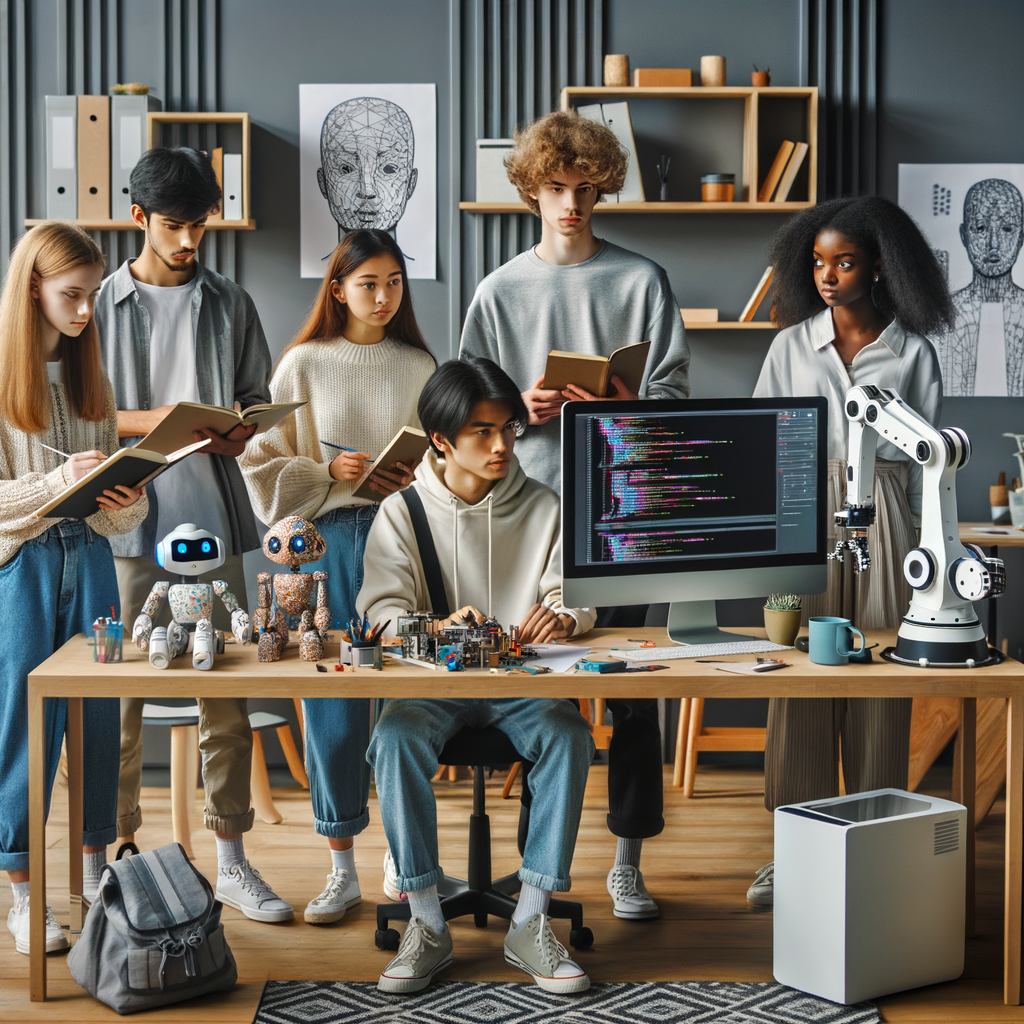The integration of Artificial Intelligence (AI) into various sectors has been transformative, and education is no exception. In high school visual arts programs, AI is not only revolutionizing the way art is taught but also how it is perceived and created. This article delves into the transformative power of AI in high school visual arts, explores how educators are embracing AI tools, and highlights the benefits for students engaging in AI-enhanced creative learning.
Transforming High School Visual Arts with AI Innovations
Artificial Intelligence is making significant inroads into high school visual arts curricula, offering unprecedented opportunities for both educators and students. Traditional art forms are being reimagined as AI tools enable the creation of artwork that was previously unimaginable. With the advent of AI-driven software, students can now explore new dimensions of creativity by transforming their sketches into digital masterpieces, all while learning about the interplay of technology and artistry.
Moreover, AI is democratizing access to advanced artistic techniques. Previously, certain high-level artistic skills were only accessible through specialized training or advanced software that was both expensive and complex. Now, AI-powered applications simplify these processes, allowing students to experiment with 3D modeling, digital painting, and even virtual reality art. This not only broadens their artistic horizons but also prepares them for the future job market, where digital literacy and creative thinking are increasingly valuable.
Another significant innovation is the use of AI in art history and critique. Machine learning algorithms can analyze thousands of artworks across different periods and styles, providing students with deeper insights into art trends, influences, and historical contexts. This capability enhances art appreciation classes, where students can engage in more informed and nuanced discussions about artistic movements and individual artists.
Additionally, AI is transforming the way art exhibits are curated in schools. Virtual reality galleries and AI-curated exhibitions allow students to showcase their work on digital platforms, reaching wider audiences. These innovations make art more accessible and interactive, as parents, peers, and art enthusiasts can explore student artworks from anywhere in the world, fostering a greater sense of accomplishment and community.
Educators Embrace AI Tools to Enhance Art Programs
The adoption of AI tools in high school visual arts programs is being met with enthusiasm by educators who recognize the potential for enriching the curriculum. Teachers are increasingly integrating AI into their lesson plans, using it to supplement traditional teaching methods and offer a more diverse educational experience. For instance, AI-based software can assist in demonstrating complex art techniques, providing students with step-by-step guidance that can be revisited outside the classroom.
In professional development, educators are undertaking training to become proficient in using AI tools, ensuring they can effectively incorporate them into their teaching. Workshops and online courses are being developed to help teachers understand the capabilities and limitations of AI in art education. This ongoing professional growth is crucial for maintaining a high standard of teaching and ensuring that students receive the most up-to-date education possible.
Furthermore, AI tools are helping educators personalize learning experiences. By analyzing student performance and preferences, AI can provide tailored feedback and recommend resources that align with each student’s unique artistic journey. This level of customization supports differentiated instruction, allowing teachers to address the diverse needs and talents of their students more effectively.
The ethical implications of using AI in the classroom are also being carefully considered by educators. Discussions around the responsible use of AI, the importance of human creativity, and the need for critical thinking skills are becoming integral parts of the curriculum. Educators are emphasizing that while AI can be a powerful tool, it should complement and not replace the fundamental human aspects of art-making.
Students Thrive as AI Enhances Creative Learning
Students in high school visual arts programs are experiencing a new level of creative freedom and engagement thanks to AI-enhanced learning environments. The introduction of AI tools has not only sparked greater interest in the arts but has also enabled students to push the boundaries of their creativity. By experimenting with AI-generated art, students are learning to blend technology with traditional artistic skills, resulting in innovative and original works.
AI’s ability to provide instant feedback has proven invaluable for students. Through real-time suggestions and corrections, AI helps students improve their techniques and develop their skills more rapidly. This immediate feedback loop enables a more dynamic and interactive learning process, where students can iteratively refine their work and gain confidence in their abilities.
Collaborative projects have also been enriched by AI technologies. Students can now work together on digital platforms, sharing their progress and integrating AI-driven elements into their collective creations. This fosters a spirit of teamwork and allows students to learn from one another’s strengths, resulting in more cohesive and ambitious projects.
Moreover, the use of AI in the arts encourages students to think critically about the role of technology in society. By engaging with AI tools, students are prompted to consider questions about authorship, originality, and the ethical implications of AI-generated art. This critical engagement not only enhances their understanding of contemporary issues but also equips them with the analytical skills necessary for future academic and professional endeavors.
The AI revolution in high school visual arts is fostering a new era of creativity, innovation, and personalized learning. As educators embrace these advanced tools and students thrive in AI-enhanced environments, the potential for artistic and educational growth is immense. The integration of AI into visual arts curricula is not just reshaping how art is created and taught but also preparing the next generation of artists and thinkers for a technology-driven future.

